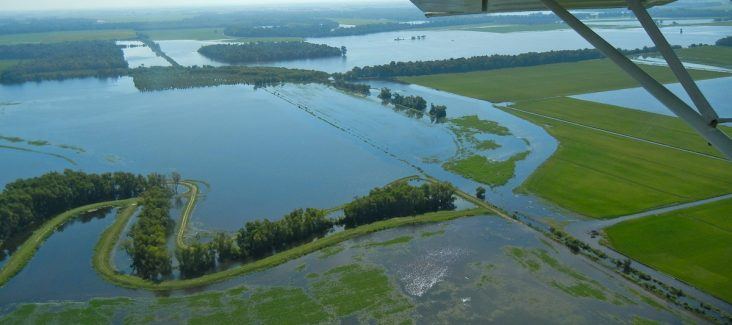USDA declares disaster for some Arkansas farmers but many may still lose their farms
by October 6, 2016 2:52 pm 301 views

(Photo courtesy of Lauren Geurin)
Crop losses from near record rainfall in August has compelled the U.S. Department of Agriculture to declare 12 counties in Arkansas natural disaster areas. The declaration qualifies farmers in those counties for federal relief if U.S. Secretary of Agriculture Tom Vilsack and Congress can agree on a money amount, State Rep. James Ratliff, D-Imboden, told Talk Business & Politics.
Farmers in the hardest hit counties – Lawrence, Randolph, and Craighead – don’t want loans, they want cash payments for their losses, Ratliff said. Arkansas officials have asked for $60 million to cover crop damage losses. If only loans are offered, as many as 75 farmers in Lawrence and Randolph counties alone could find new vocations in the coming year, he said.
“In any given year we’ll have one or two farmers who decide to hang it up in district 60,” he said. “In a rare year, we might have up to five. Having this many potentially quit is unprecedented. It’s unheard of,” he said.
Funding will likely have to come from Congress, he said. Local officials are hopeful a decision by federal officials will come before the end of the year. The declaration includes Carroll, Clay, Independence, Jackson, Lincoln, Madison, Prairie, White, and Woodruff counties. It’s part of the same declaration that covered rain-stricken Louisiana.
At least 40,000 acres of rice were lost to the rains, according to estimates. Nearly 8,000 acres, mostly soybeans, in the Black River Bottoms were destroyed in Northeast Arkansas. Most of the damaged row crop acres are in the NEA region. Soybean and rice crops have been the hardest hit, according to farmers.
Up to 15-inches of rain fell during a more than week long period in mid-August, according to the National Weather Service. The unrelenting rains caused creeks and rivers to flood in the vast Mississippi Delta, one of the largest row crop regions in the country.
Farmers have insurance to cover losses, but it doesn’t cover enough, Ratliff said. Insurance programs typically cover 75% of the crop, with 25% of that going to the land owner, he said. It leaves half the crop price for the farmer. For example, if a farmer planted soybeans on a contract at $8 per bushel, he’ll receive $4 per bushel on 75% of what he planted.
Commodity prices have been lower in recent years, while input costs have steadily risen. It’s estimated at least $50 million worth of row crops were lost in the flooding, according to the University of Arkansas Division of Agriculture. Rice farmers could lose $18.6 million alone. Soybean farmers could lose $11 million in Northeast Arkansas. Cotton losses could top $11.5 million.
Two other row crops in Northeast Arkansas, corn and peanuts, were relatively unaffected by the heavy rains. Most of the 20,000-acre peanut crop was planted in Mississippi County on well-drained soil. Corn crops were already in harvest stage when the rains hit.
